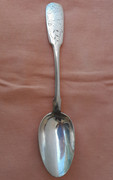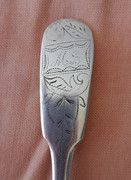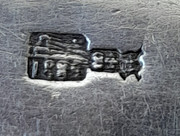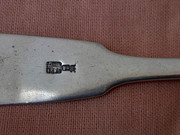I found 2 serving spoons on the market today. I bought them as plated spoons but believe it's Russian.
They are around 21cm long.
The first one got a pin prick design and a monogram. I do not see a maker mark and the essay mark is bit damaged. I think the date is 1885. Any help will be welcome.
Thank you
Jannie



